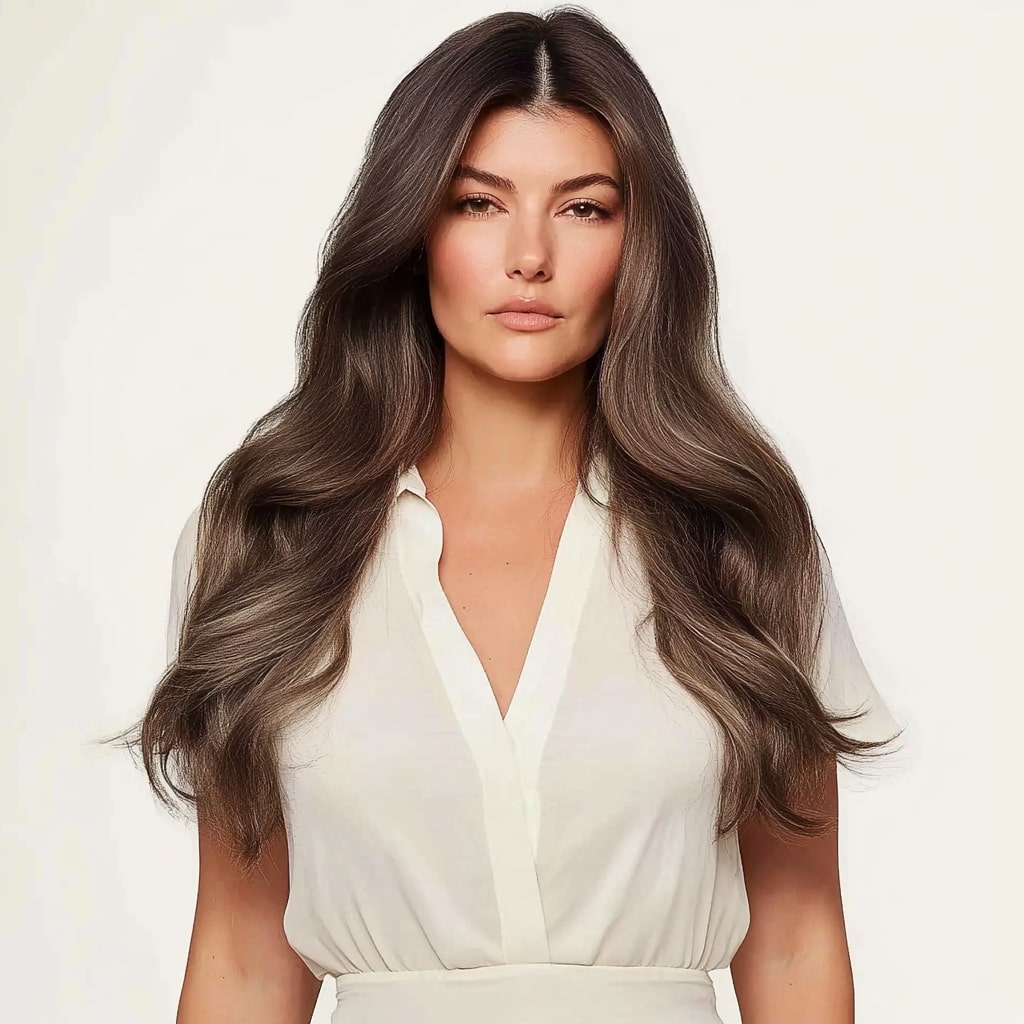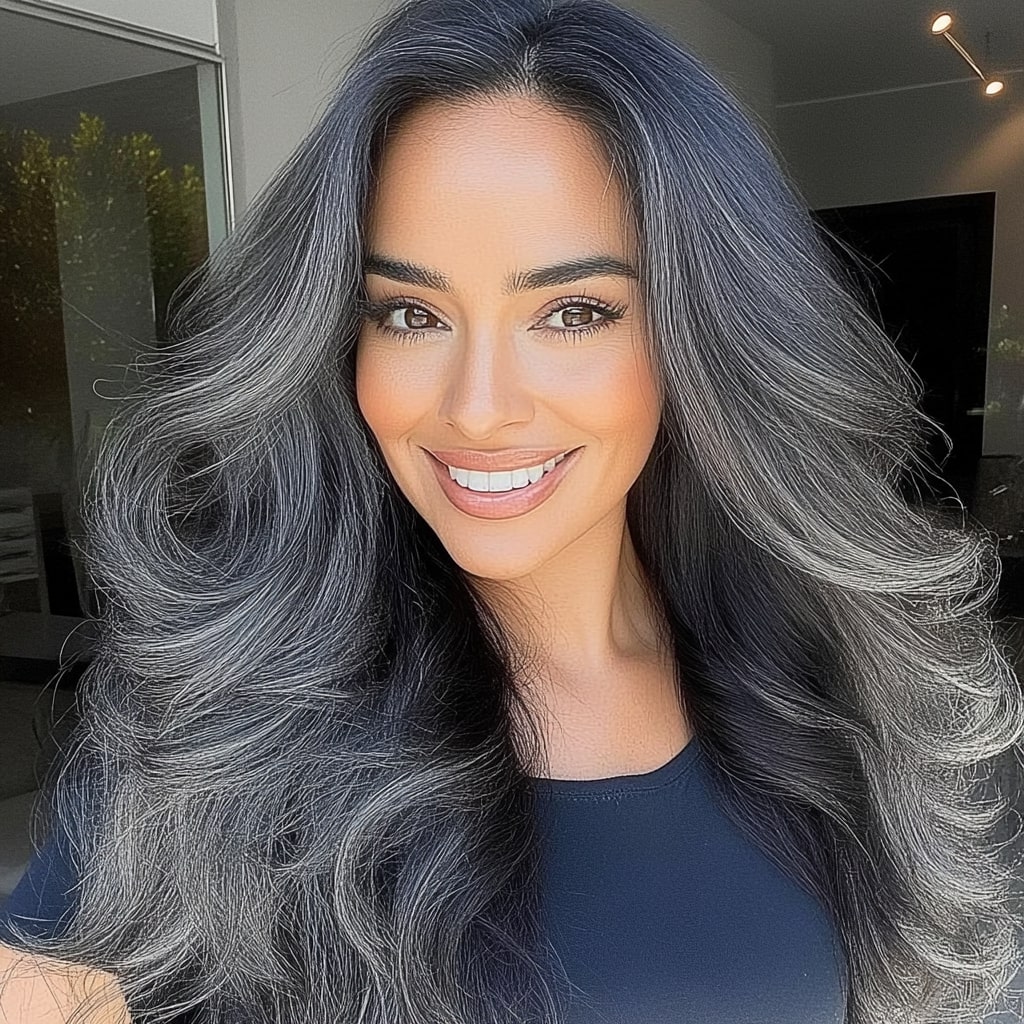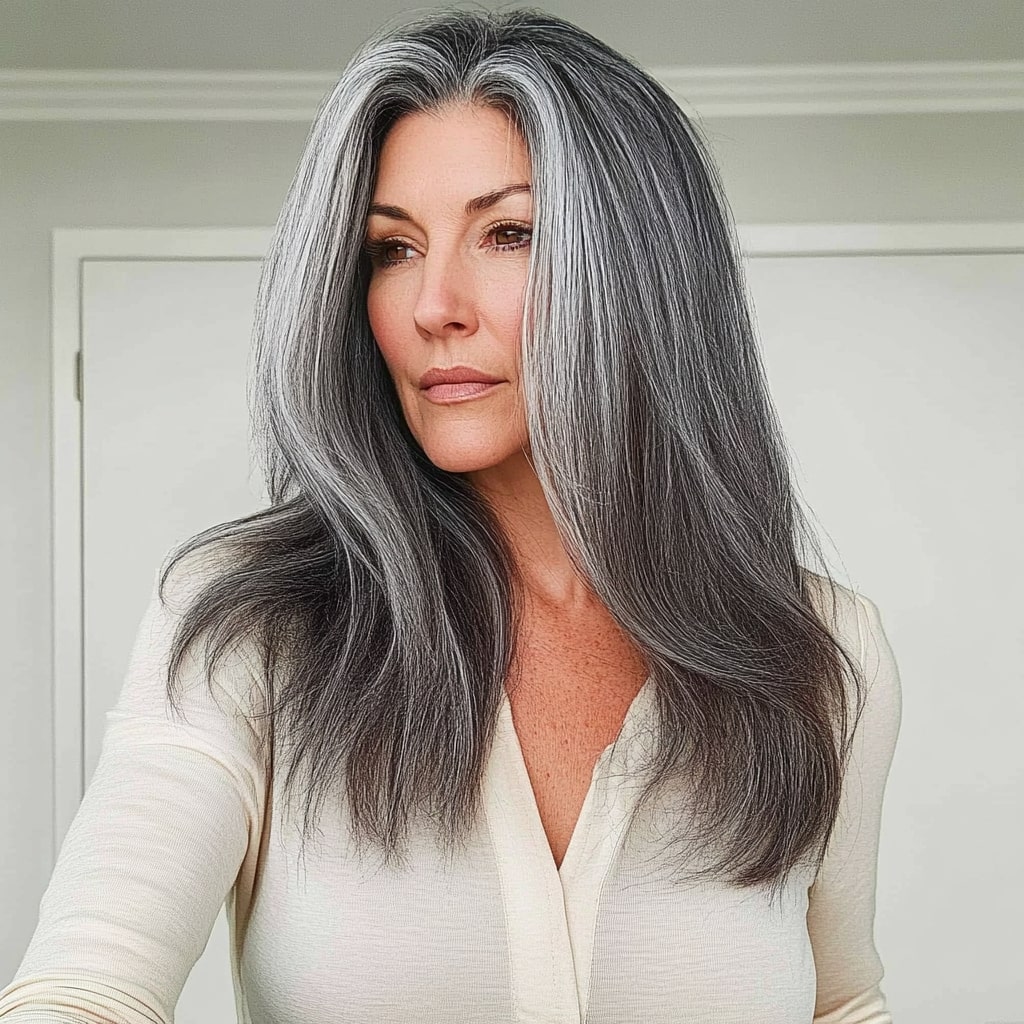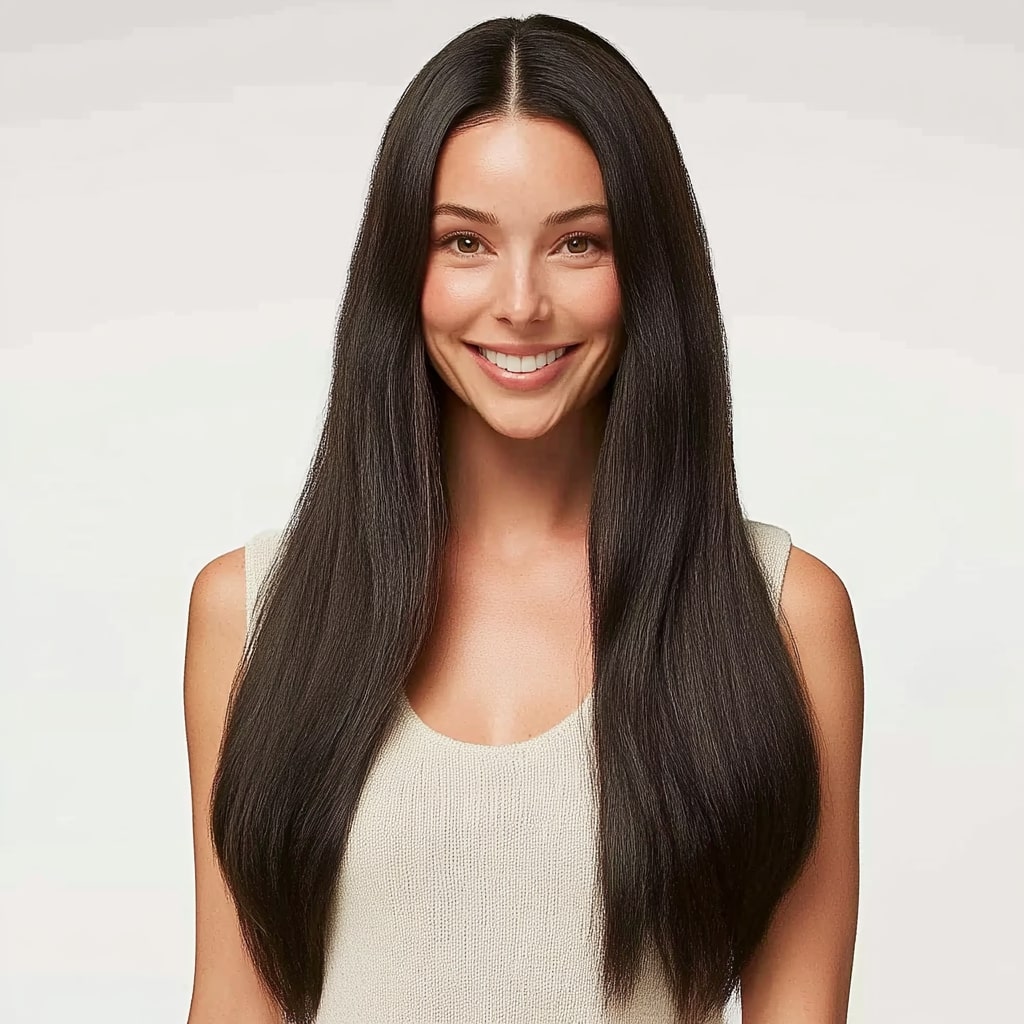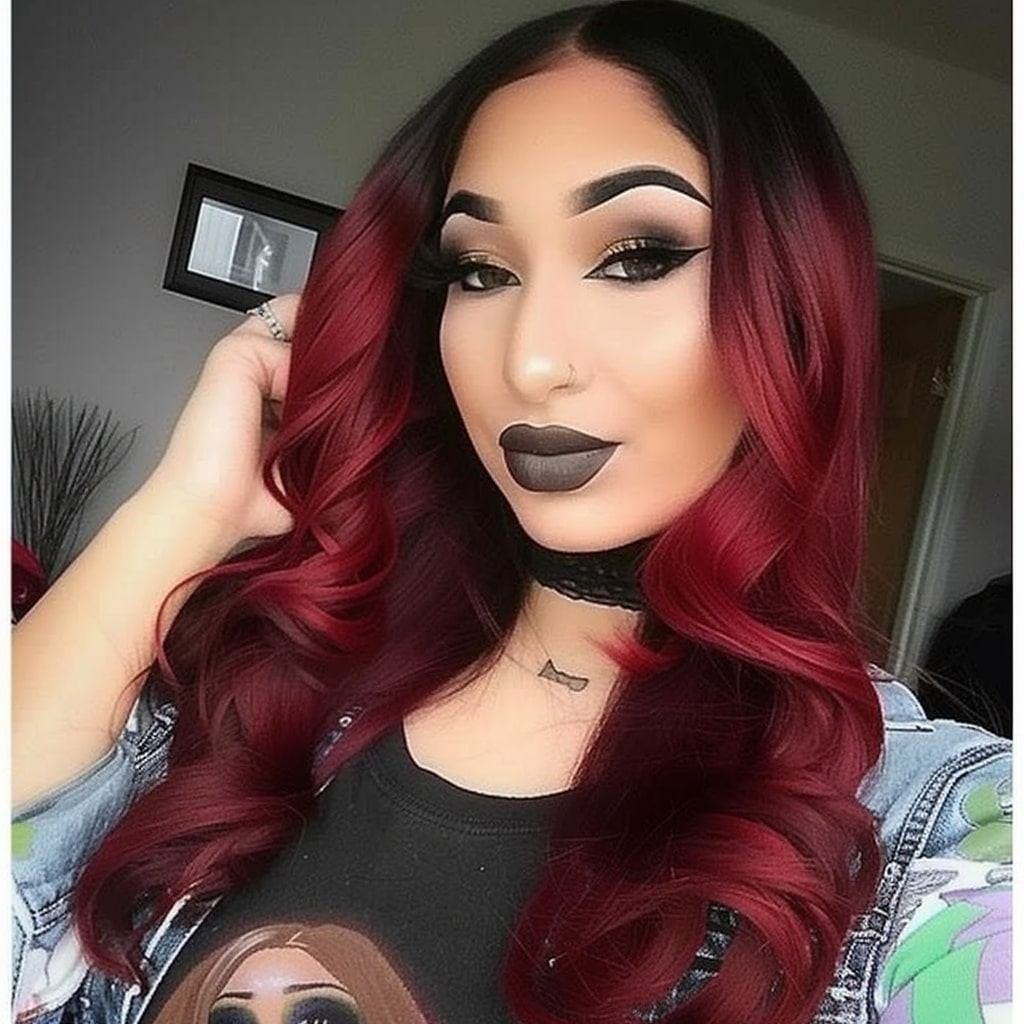Top Mistakes to Avoid with Tape-In Hair Extensions

Introduction to Tape-In Extensions
Tape-in hair extensions have revolutionized the beauty and hairstyling industry, offering a blend of versatility, ease of use, and the opportunity for dramatic, yet natural-looking hair transformations. As a semi-permanent method, they're an appealing choice for those looking to add volume, length, or even vibrant color streaks without committing to permanent changes or damaging their natural locks. These extensions come in thin, pre-taped wefts that are expertly applied by sandwiching small sections of the user's hair between two adhesive strips.
The process of applying tape-in extensions is relatively straightforward, especially when compared to more traditional methods that require braiding, sewing, or the use of potentially damaging heat tools. This simplicity, coupled with the promise of minimal harm to the natural hair, has propelled tape-ins to the forefront of hair extension methods. However, the journey from selection to application and maintenance of tape-in hair extensions is fraught with potential missteps.
In this comprehensive guide, we delve into the common pitfalls associated with tape-in extensions, providing valuable insights and advice to help you avoid them. Whether you're contemplating your first set of tape-ins or looking to refine your approach with a new application, this guide aims to equip you with the knowledge necessary for a flawless, beautiful extension experience. Let's explore the critical steps and common errors to steer clear of, ensuring your tape-in extensions enhance your look without compromising the health and beauty of your natural hair.
Not Consulting a Professional: The Pitfalls
Embarking on your tape-in extension journey without the guidance of a professional hairstylist can be likened to navigating uncharted waters without a map. The allure of a DIY approach, fueled by tutorials and seemingly straightforward instructions, may be tempting, but it often overlooks the nuanced expertise required for optimal results. Here are key reasons why professional consultation is non-negotiable:
-
Customized Selection: A professional stylist can help you choose the right type, color, and length of extensions, ensuring a seamless blend with your natural hair. This customization is crucial for achieving a look that feels as good as it looks.
-
Expert Application: Professionals are trained to apply tape-in extensions in a way that maximizes longevity and minimizes damage to your natural hair. They understand the importance of placement, pressure, and alignment, ensuring each weft is positioned for comfort and natural movement.
-
Damage Prevention: Incorrect application can lead to a host of issues, including hair breakage, scalp irritation, and even hair loss. Stylists employ techniques that protect your natural hair, preserving its health and integrity.
-
Maintenance and Removal Guidance: A stylist doesn’t just apply your extensions; they also equip you with the knowledge to care for them. From washing techniques to removal processes, professional advice is invaluable in maintaining the health of your hair and extensions.
Skipping the professional consultation and application process may save you time and money in the short term, but it's a decision that often leads to costly corrections down the line. The expertise of a seasoned stylist is an investment in the longevity and beauty of your tape-in extensions, ensuring a successful and satisfying experience.
Choosing Low-Quality Extensions
Opting for low-quality tape-in extensions is a common mistake that can significantly impact the overall look and health of your hair. While it might be tempting to save money on cheaper options, the downsides of inferior quality extensions far outweigh the initial savings. Here's why prioritizing high-quality tape-in extensions is crucial:
-
Appearance and Feel: High-quality extensions are made from premium hair, often Remy or virgin, ensuring they blend seamlessly with your natural hair. They look more natural, feel softer, and have a shine that mimics healthy hair. In contrast, low-quality extensions can appear dull, fake, or overly shiny, and feel rough or plastic-like.
-
Longevity: Quality extensions last longer. They can withstand washing, styling, and daily wear without tangling, matting, or shedding excessively. This durability means you'll spend less in the long run because you won't need to replace them as frequently.
-
Hair Health: High-quality tape-in extensions are designed to minimize damage to your natural hair. They come with gentle, non-toxic adhesives and are constructed in a way that distributes weight evenly, reducing strain on your roots. Cheap extensions, however, may use harsh adhesives that can lead to breakage, irritation, or even hair loss.
-
Styling Flexibility: Superior extensions can be styled just like your own hair — they can be cut, colored, and heat-styled without damage, allowing for greater versatility in your look. Low-quality options often have limitations on styling, as they can melt, become damaged, or lose their color when exposed to heat or dye.
Investing in high-quality tape-in extensions is investing in your appearance, hair health, and overall satisfaction with your extension experience. It's a choice that pays dividends in the form of beautiful, long-lasting, and natural-looking hair enhancements.
Incorrect Placement: Common Errors
The placement of tape-in extensions is both an art and a science, requiring a keen eye and skilled hand to achieve the perfect balance between volume, length, and natural movement. Incorrect placement not only compromises the aesthetic appeal of the extensions but can also lead to discomfort and potential damage to your natural hair. Here are several common errors to avoid:
-
Too Close to the Scalp: Extensions placed too close to the scalp can cause tension and discomfort. This mistake often leads to difficulty in styling and can even result in hair loss due to the excessive strain on the roots.
-
Uneven Distribution: Extensions need to be evenly distributed across the head to ensure a natural look and comfortable wear. Uneven distribution can lead to patches of hair that are noticeably thicker or longer, disrupting the overall harmony of your hairstyle.
-
Applying on the Wrong Hair Sections: Extensions should be applied to sections of hair that can support their weight without causing strain. Applying them to too fine or weak sections can lead to breakage and loss of the natural hair.
-
Ignoring Natural Hair Texture and Layering: The extensions should match the natural hair's texture and be placed in a way that complements the existing cut and layers. Failing to do so can result in a disjointed appearance that highlights the extensions as artificial additions rather than seamless enhancements.
-
Placing Too Many Extensions: Overloading the hair with too many extensions can not only look unnatural but also places unnecessary strain on the natural hair. It's crucial to find the right balance that achieves the desired volume and length without compromising hair health.
To avoid these pitfalls, it's recommended to have your tape-in extensions applied by a professional stylist. They can ensure that the extensions are placed correctly, offering a blend of aesthetics and comfort while protecting the integrity of your natural hair.
Applying Extensions on Dirty or Oily Hair
The condition of your hair at the time of tape-in extension application plays a pivotal role in the success and longevity of the attachment. Applying extensions to dirty or oily hair is a common mistake that can lead to a host of problems, including weak adhesion, slippage, and premature extension loss. Here’s why ensuring your hair is clean and product-free is essential:
-
Adhesion: The adhesive on tape-in extensions is designed to bond securely to clean hair. Oils, dirt, and product buildup can create a barrier between the tape and your hair, preventing a strong bond. This weak adhesion can cause the extensions to slip or fall out much sooner than they should.
-
Longevity: Clean hair ensures that the tape-in extensions can last as long as possible. When applied to clean hair, the risk of slippage is minimized, maintaining the desired look for the full wear cycle before needing reapplication or adjustment.
-
Scalp Health: Applying extensions to a clean scalp reduces the risk of irritation, itching, and infections. A buildup of oils and products can not only compromise the adhesion of the extensions but also create an environment prone to bacterial growth.
-
Overall Appearance: Extensions applied to clean hair blend more seamlessly and look more natural. Dirty or oily hair can make the extensions appear clumpy or separate from your natural hair, drawing attention to the fact that you are wearing extensions.
Before applying tape-in extensions, it’s important to wash your hair with a clarifying shampoo to remove any residue, oils, or products. Avoid using conditioners or hair treatments that could leave a film on your hair. Ensuring your hair is completely dry and product-free will provide the best foundation for a successful, long-lasting application.
Failure to Apply the Correct Amount of Pressure
The application of tape-in hair extensions requires not just precision in placement but also the right amount of pressure to secure them effectively. Insufficient pressure during the bonding process can lead to weak attachment points, causing the extensions to slip or come loose prematurely. Conversely, applying too much pressure can also have adverse effects. Here's why the correct application pressure is vital:
-
Ensuring Strong Adhesion: Applying the right amount of pressure activates the adhesive on the tape, ensuring a strong, secure bond to the natural hair. This pressure needs to be firm and even across the entire width of the tape to prevent any weak spots that could lead to slippage.
-
Avoiding Damage: While it's important to apply enough pressure to secure the tape, excessive force can damage the natural hair and scalp. The key is to find a balance that ensures the extensions are firmly attached without causing discomfort or strain on the natural hair.
-
Uniformity and Comfort: Proper application pressure ensures that the extensions lay flat and uniform against the head, contributing to a more natural look and comfortable wear. Extensions that are not properly secured can flip or twist, leading to an uneven appearance and irritation.
-
Longevity of Wear: Extensions that are correctly applied with the appropriate amount of pressure can last longer, maintaining their position and appearance until the next maintenance appointment. This reduces the need for frequent adjustments and prolongs the life of the extensions.
Achieving the right balance requires a combination of technique and experience, which is why professional application is recommended, especially for those new to tape-in extensions. A professional stylist can ensure that each extension is applied with the correct amount of pressure, securing a beautiful and durable result.
Overlooking the Importance of Alignment
Proper alignment of tape-in hair extensions is crucial for a seamless and natural-looking result. Misaligned extensions can create an uneven, bulky appearance and may even cause discomfort or damage to the natural hair. Understanding the importance of alignment ensures that the extensions not only look good but also feel comfortable and last longer. Here’s why alignment matters:
-
Natural Appearance: Correct alignment ensures that the extensions follow the natural flow and direction of your hair. This is essential for blending the extensions seamlessly with your natural hair, making it difficult to tell where your hair ends and the extensions begin.
-
Comfort: Properly aligned extensions lie flat against the head, reducing the risk of tangles, snags, and discomfort. Misaligned extensions can poke or irritate the scalp, leading to a less comfortable wearing experience.
-
Reduced Strain on Natural Hair: When extensions are aligned with the natural direction of hair growth, they distribute weight evenly across the scalp. This minimizes tension and strain on natural hair follicles, reducing the risk of damage or hair loss.
-
Ease of Styling: Aligned extensions are easier to style, as they move naturally with your own hair. This makes it simpler to achieve a variety of hairstyles without the extensions becoming noticeable or obstructive.
-
Durability: Proper alignment contributes to the longevity of the extensions. When applied correctly, the risk of slipping or premature wear is significantly reduced, ensuring the extensions maintain their desired look for as long as possible.
Achieving perfect alignment requires a combination of careful planning, precision, and skill, typically provided by a professional stylist. They can ensure that each extension is placed to complement the natural contours and growth patterns of your hair, leading to a beautiful, natural, and long-lasting extension experience.
Ignoring Proper Maintenance and Care
Maintaining tape-in hair extensions is as crucial as their correct application. Neglecting the proper care regimen can lead to issues such as tangling, matting, and even premature loss of the extensions. Here’s how to ensure your extensions remain in top condition:
-
Gentle Washing: Use a sulfate-free shampoo and condition your extensions carefully. Avoid applying conditioner directly to the adhesive tape to prevent it from loosening. Wash your hair in a downward motion to prevent tangling.
-
Avoiding Harsh Products: Harsh chemicals can damage the extensions and weaken the adhesive bond. Stick to products recommended by your stylist, ideally those formulated for extensions.
-
Regular Brushing: Use a soft bristle brush or a special extension brush to gently detangle your hair, starting from the ends and working your way up. Brushing regularly prevents matting and tangling.
-
Avoiding Heat Damage: When using heat styling tools, apply a heat protectant and try to avoid direct heat on the adhesive tape. Opt for lower heat settings to protect both your natural hair and the extensions.
-
Sleeping Care: Tie your hair in a loose braid or ponytail to prevent tangling while you sleep. Consider using a silk pillowcase to reduce friction.
-
Scheduled Maintenance: Regular appointments with your stylist for maintenance checks are vital. They can address any issues, reapply extensions that have grown out, and ensure the health of your natural hair.
Proper care extends the life of your extensions and keeps them looking as good as the day they were applied. It also protects your natural hair from potential damage, ensuring that both your extensions and natural hair remain healthy and vibrant.
Removal Mistakes That Can Damage Your Hair
The removal of tape-in hair extensions is a delicate process that, if done incorrectly, can lead to damage to your natural hair. Here are some common mistakes to avoid during the removal phase:
-
Rushing the Process: Trying to remove the extensions quickly without properly dissolving the adhesive can pull on your natural hair, leading to breakage and hair loss. It’s essential to be patient and gentle throughout the removal process.
-
Not Using the Right Solvent: Special solvents are designed to weaken the adhesive bond without damaging your hair. Using inappropriate substances or skipping the solvent altogether increases the risk of damaging your natural hair during removal.
-
Forcing the Extensions Out: Even after applying a solvent, some extensions may not come out easily. Forcing them out can cause significant damage to your natural hair. Instead, apply more solvent and gently work the extension until it releases.
-
Neglecting Aftercare: After removing the extensions, it's crucial to wash and condition your hair properly to remove any residual adhesive and solvent. Skipping this step can lead to scalp irritation and hair damage.
-
DIY Removal Without Proper Knowledge: While it’s possible to remove tape-in extensions at home, doing so without understanding the correct procedure can result in hair damage. If you’re unsure, it’s always safer to have them professionally removed.
By avoiding these common mistakes and approaching the removal process with care and the right products, you can protect your natural hair from damage, ensuring it remains healthy and strong after the extensions are gone.
Conclusion: Ensuring a Successful Tape-In Extension Experience
Embarking on your tape-in hair extension journey can be an exciting way to transform your look, adding volume, length, and even pops of color to your natural hair. However, the difference between a dreamy, seamless blend and a problematic application often lies in the attention to detail and adherence to best practices throughout the process.
From the initial consultation with a professional to the careful selection of high-quality extensions, proper placement, and meticulous maintenance, each step plays a crucial role in the overall success and longevity of your tape-in extensions. Ignoring these steps can lead to common pitfalls, such as damage to your natural hair, discomfort, and unsatisfactory results that fall short of your expectations.
Remember, the beauty of tape-in extensions not only lies in their ability to enhance your natural hair but also in their capacity to maintain the health and integrity of your locks when applied and cared for correctly. By avoiding the mistakes outlined in this guide and following the advice of your stylist, you can enjoy a beautiful, natural-looking mane that feels as good as it looks.
Whether you're a first-time user or looking to perfect your tape-in extension experience, the journey towards flawless, natural-looking hair extensions is within reach. With the right preparation, application, and care, your tape-in hair extensions can provide a comfortable, durable, and stunning enhancement to your natural beauty.
Related Posts







 My Store Credit
My Store Credit
 Buy Again
Buy Again
